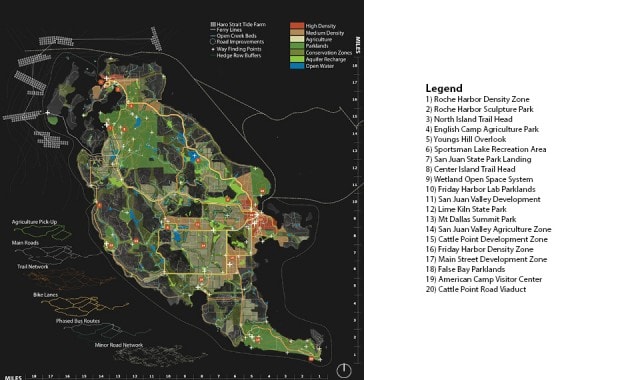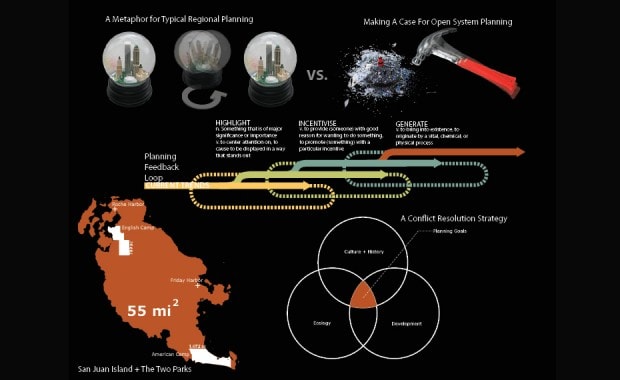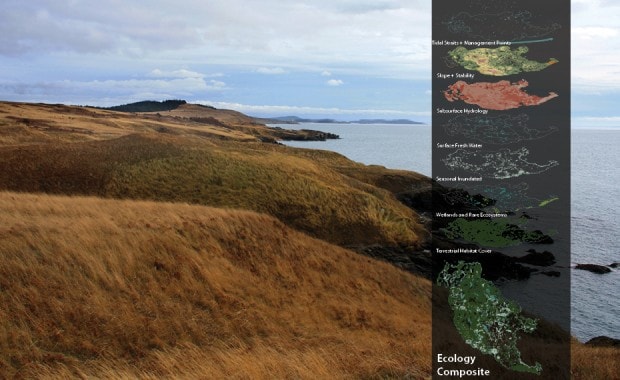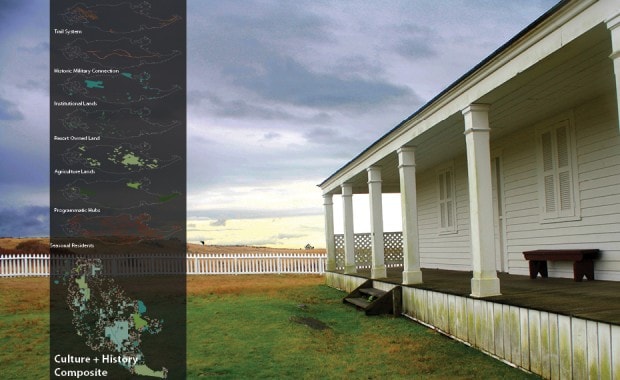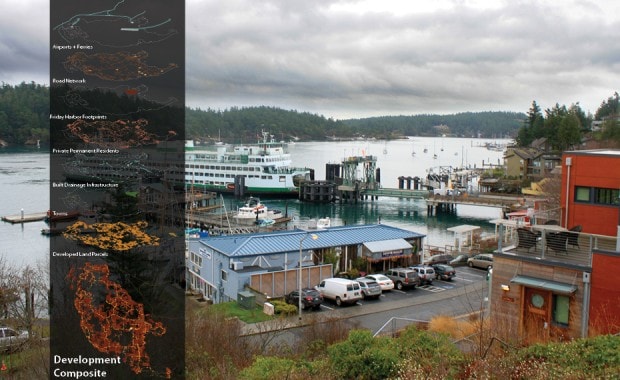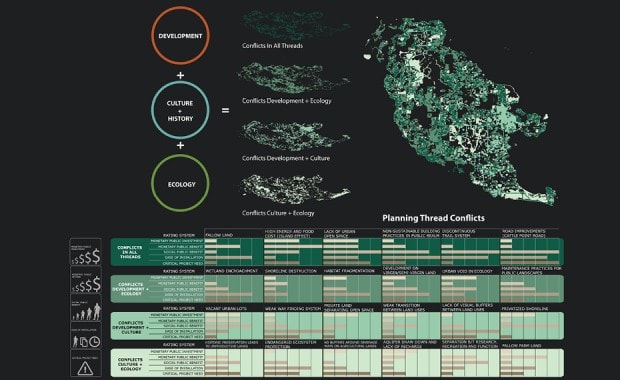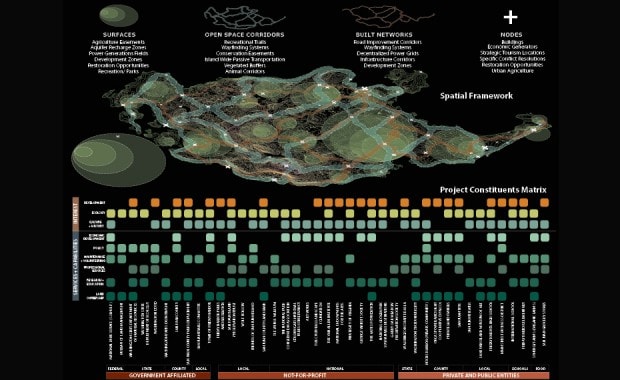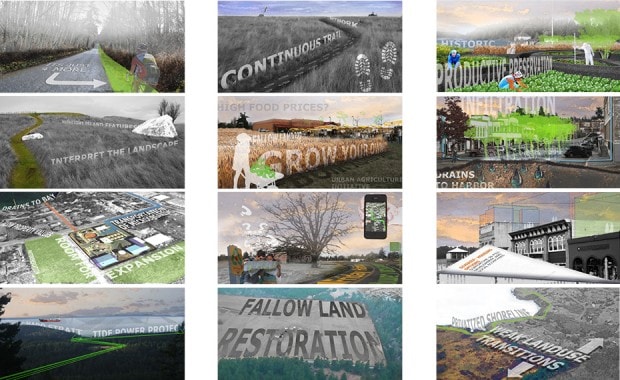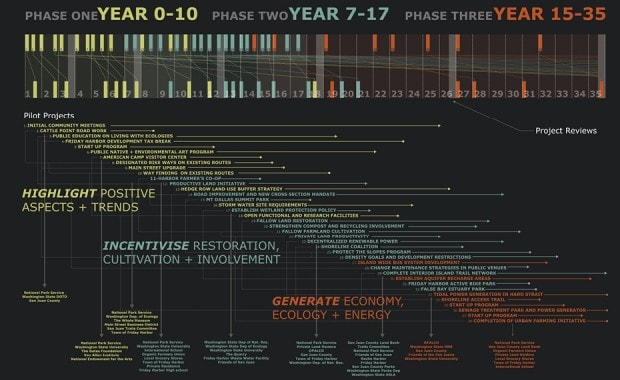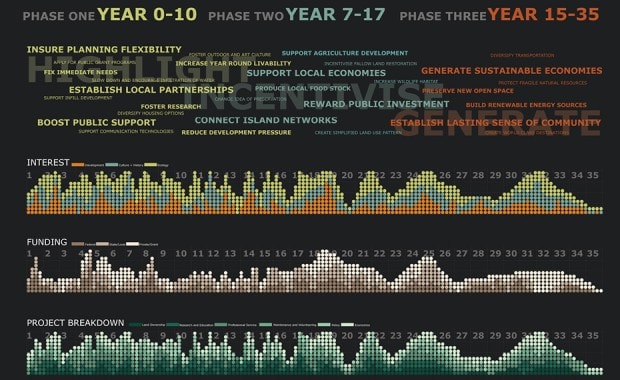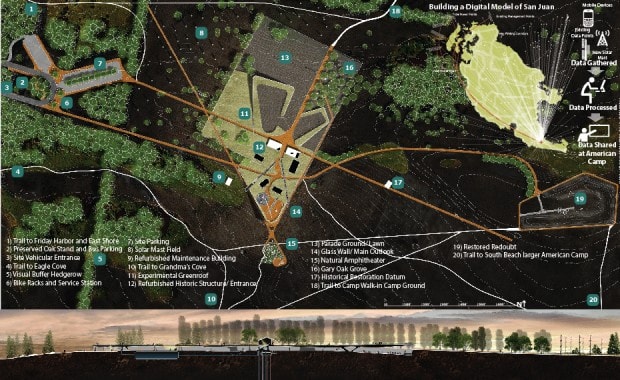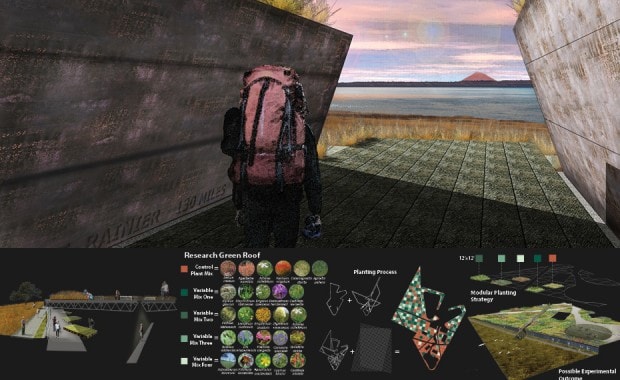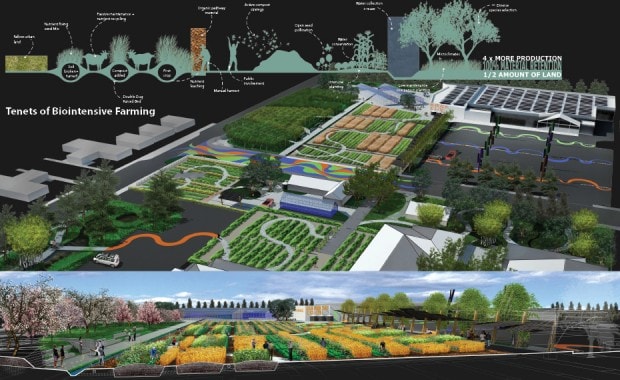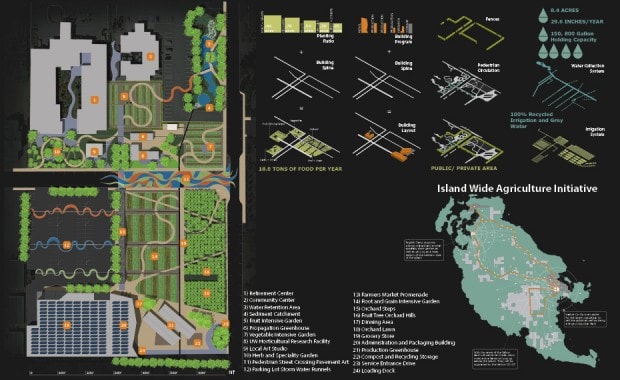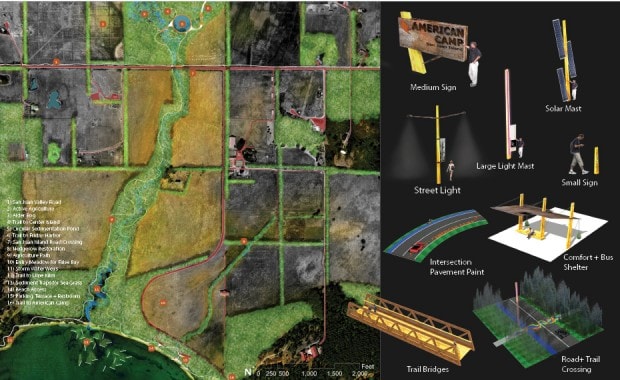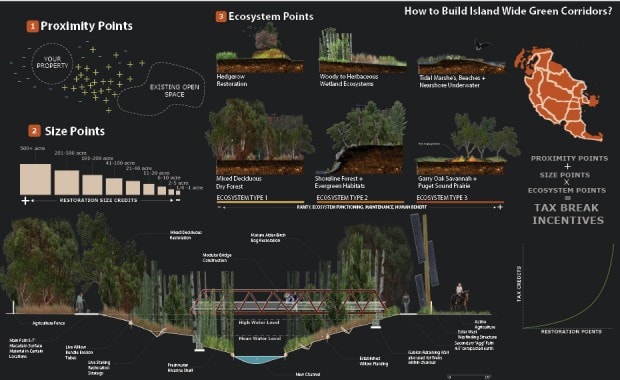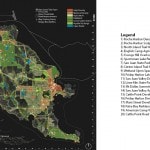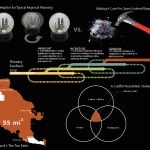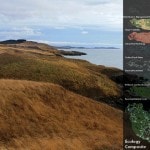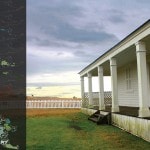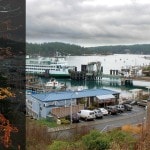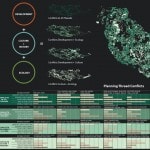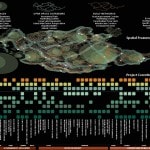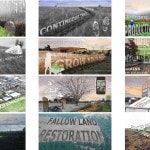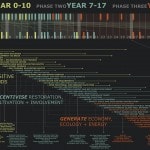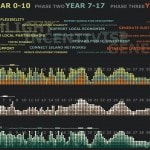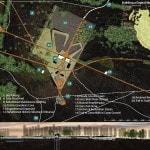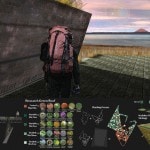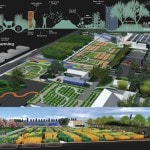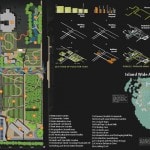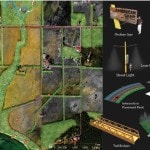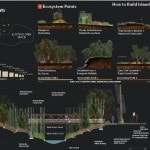Project: San Juan Island Development Network: Microcosm of America
Location: San Juan Island, Washington
Designer: Joshua Brooks
Year: 2012
Program: Louisiana State University, Robert Reich School of Landscape Architecture
Faculty Advisors: Lake Douglas, Van Cox
Project Description: This project proposes a process-oriented planning framework, focusing on built works, policies, community programs, and funding strategies, for the San Juan Island National Park and the supporting rural community of San Juan Island. This process-based approach can help the island absorb future growth, foster the unique local culture, and protect and enhance the native ecosystem as its population doubles over the coming decade.
Theory: By employing three theoretical strands—1) systems thinking, as synthesized by MIT’s Donella Meadows, positing that the understanding of the relationship between entities offers a greater understanding of the larger system; 2) Chris Reed’s “curated ecologies,” which proposes that designers can establish a series of interactions over time between humans and ecological processes to produce desired outcomes; and 3) Rem Koolhaas’s process planning concept from the article “Whatever Happened to Urbanism,” in which he points out how modern planning efforts often don’t result in the intended end-product because of the reliance on the planning of permanent objects, instead of the planning of the processes themselves—this project attempts to challenge traditional top-down planning and unlock the potential of engaging process and complexity.
Project Goals: Five project goals are proposed within a 35-year framework: (1) connect island ecosystems through restoration easements, conservation policy, and a network of trails (2) diversify housing options and add user amenities to increase year round livability (3) support local agriculture and decentralized renewable energy production (4) structure an efficient transportation infrastructure with minimal disturbance to the existing system; and (5) foster island culture, art, research, tourism, local businesses, and natural and native history.
Design (Pilot Projects): Phase One (HIGHLIGHT): American Camp Visitor Center | As part of phase one, the American Camp parcel of San Juan Island National Park receives several upgrades, including a viaduct on an eroding cliff, several public art projects, and new visitor facilities which serve as a catalyst and demonstration for sustainable building practices and resource management across the island. Housing a theater, research laboratories, rental space, administration offices, and a large display area with views to Mount Rainer and the Olympic Mountain Range, this building serves the National Park Service, the University of Washington, and the people of San Juan Island.
Phase Two (INCENTIVIZE): Harbor CO-OP and the Island Agriculture Initiative | A biointensive urban farm and farmer’s co-op is built in conjunction with Friday Harbor grocery store, University of Washington Horticultural Research Laboratory, and the Friday Harbor community center. Using best management practices the construction of this farm will turn a fallow urban lot into an eighteen acre productive landscape with onsite packaging and propagation facilities, encouraging sustainable farming practices, combating the inflated price of food on San Juan island, and growing the local economy. To further support the growth of local farming, a harvest pickup service is offered along a selected route which connects areas of the island that are deemed best for farming.
Phase Three (GENERATE): How to build a Green Corridor Network | A network of open space corridors is grown across the island, creating an interconnected trail system, while simultaneously promoting the protection and restoration of wetlands, streambeds, estuarine habitat, and rare prairie and savannah ecosystems, as well as increasing water infiltration and curbing aquifer drawdown. A tax break program offers incentives for landowners to create ecological corridors within their property, with incentives being weighted by ecosystem type, parcel size, and proximity to existing open space.
Rather than relying on closed systems, this project offers a flexible, design-driven and process-based approach to planning, providing guidance to the National Park Service as well as the county and towns of San Juan Island on how to deal with its projected development without sacrificing culture or ecology.
| previous project | next project |
